7 Lessons learned from scaling a content machine at Crossbeam in 18 months

I’ve been working as a head of “content” in one capacity or another since 2014 and I’ve never seen a hotter job market for my field. Tech companies are tripping over themselves to “go direct” and build the audiences they want to reach, skipping most traditional media channels.
After writing about how to grow one’s career in content, this is the sister post: This is how companies and leaders should think about audience building. I’m sharing because building an audience is much much harder than it looks (just ask the 50 million Americans out here trying to be influencers) and also to share many of the unseen factors that go into building an audience for a startup.
There are thousands of posts about one-off content/editorial tactics. But not so much about launching and scaling a content operation at a B2B SaaS company from a standing start to building a reliable machine that delivers top of the funnel traffic and marketing qualified leads.
I’ve been the Director of Content at Crossbeam, a B2B SaaS company based here in Philadelphia since September 2019. I’ve had the privilege of building this thing alongside the content team of Jasmine Jenkins, Olivia Ramirez, and Nick Beaulieu and under the guidance of Jess Waldeck and Bob Moore. Since founding the content and community department at Crossbeam:
- We’ve built an email list of 22,000+ averaging a 38% open rate.
- We’ve averaged a 14% month of month traffic increase
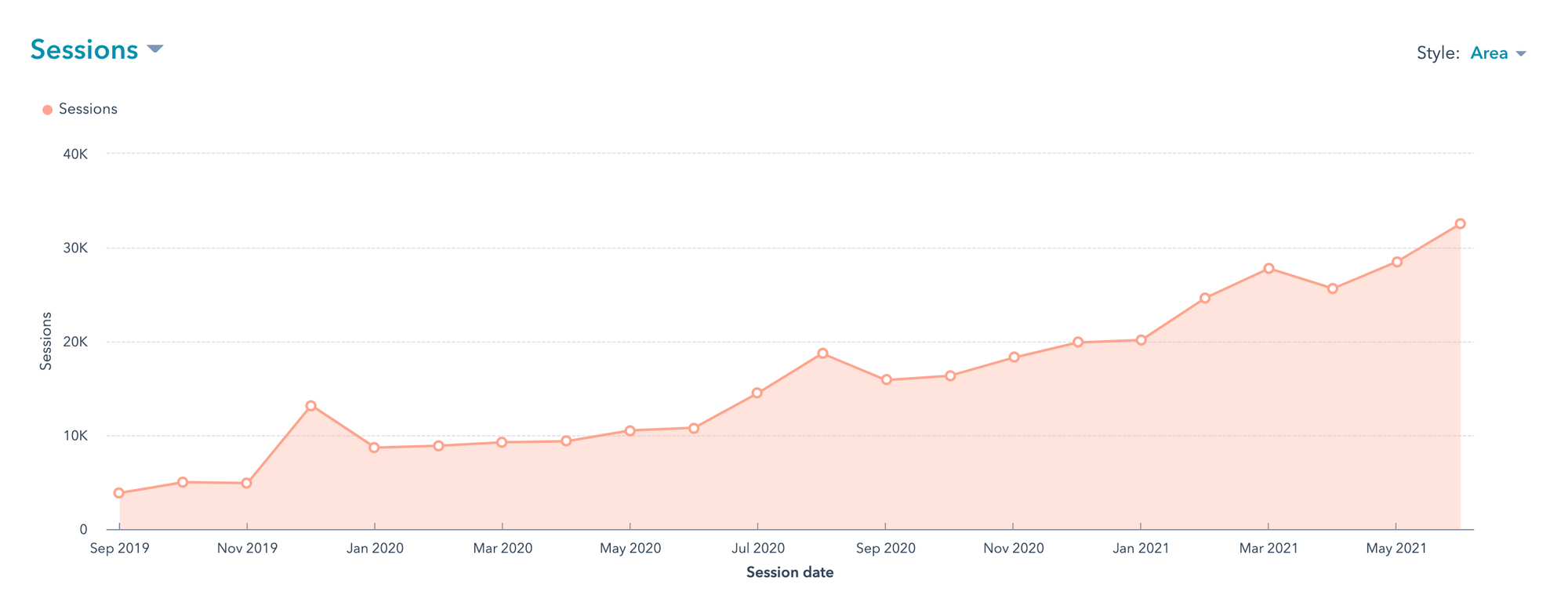
- We’ve established many industry-defining terms (more on that in a bit)
- Most importantly, our readers constantly give us positive feedback.
In the last 24 hrs I’ve learned as much about SaaS partnerships as a student probably learns in a course in a semester
— Tony Lomastro (@TonyLomastro) June 15, 2021
Standout resources were https://t.co/hNRJuOxARY & the hard numbers in https://t.co/qGElSN2BjN
The rate at which you can learn things for free in 2021 is insane
This post is about what worked, what didn’t, and how we think about building an audience.

Lesson #1: Know Your Audience
When you are building an audience for a company, you are often providing the “top of the funnel” for marketing and sales. You are gathering a bunch of prospective buyers, asking them to hang out for a bit, and if they are interested in what you have to sell, they’ll strongly consider buying.
Before you write any blog posts, record any podcasts, or sit down in front of that webcam, you need to know who you are talking to.
In our early days at Crossbeam, we called ourselves a “collaborative data platform” — we help companies find overlaps in their CRM data. So who would want to buy Crossbeam and thus, what audience should we try to build?
We codified this early. We knew that the people who felt the pain were “partner professionals” at SaaS companies. An excerpt from an early strategy document:
_ Primary Audience: Anyone who owns partner-influenced revenue at a B2B (though B2C should be kept in mind for the future) SaaS company. Exact job title TBD, likely “partnership managers.”_
_ Secondary Audience: Director/VP of partnerships, head of sales, chief revenue officer, head of business development_
Some people overthink these as “personas” and invent entire characters. If you’re in B2B, don’t waste your time.
It is your job to make your reader a superhero within their organization. Throughout my career, I’ve written for marketers, designers, sales, and now those working on partnerships. Each one is overlooked in some way by their peers and colleagues. What can you give them to accelerate their career growth? In B2B, every publication is ultimately a career advice publication. Get your readers a raise or a promotion and they’ll trust you (and you’ll feel great!).
Pick a job title or job responsibilities and get moving. Talk to as many people that fit that profile as possible, the content ideas will come quickly.
Note: The hard part about startups is that it may not be immediately obvious who your primary buyer is. This is where content needs to enter a symbiotic relationship with sales. Check in with any customer-facing team member and take note of any content that comes up during sales conversations — that’s the work that is likely targeting the right audience.
Lesson #2: Skip SEO — at first
You have the “who” now it’s time for the “how”. This is where most content marketers get a little too ambitious. Everything you read about content marketing will tell you how to do keyword research and bang out dozens of SEO-ready posts per month. This is most often an awful idea.

Chances are, you are a one-person operation. In the early days, you will not win on quantity. Incumbents with tons of inbound links and a fleet of paid writers will smash you the moment they notice you.
One of your primary jobs as an early B2B SaaS content leader is communicating why the “normal” SEO approach won’t work for this market — in fact, it might be your most important task in the early days. Don’t play a game you can’t win. Instead, use your “weakness” of a small team as a strength (more on that in Lesson #7).
In B2B SaaS, ignore SEO and instead focus on getting actual humans who could actually become buyers to read and respond to your content. It’s better to have 10 readers who respond than 10,000 who do a drive-by via Google and exit in less than a minute.
Another “weakness” of B2B SaaS is that many companies rely on a handful of enterprise deals for revenue versus the 10,000 $10 subscriptions one needs for a B2C startup. That weakness is an asset. If you can bring in a small handful of ultra-qualified leads, you’re doing your job. So put out content that is mostly likely to get a handful of potential buyers to sit up and take notice. Some advice for accomplishing this:
- When you’re doing your audience research and interviewing people who are potential buyers, ask, “Where do you keep up with this industry?” The answer is where you should consider guest posting or sponsoring.
- Include the voice, and the actual words, of your readers in your blog posts. When you interview someone and distill down their insights into a blog post, that’s at least one reader! Now try roundups, or mentioning 10+ companies/people in a single post.
Additionally, SEO takes months to gain traction and show results. You need to be certain you have that audience/publication/business fit before investing in a long-term strategy like that. Get a repeatable cycle of publishing stuff that gets buyers excited. Then, and only then, should you worry about SEO. This way, you’ll have somewhat of a traffic and inbound link foundation on which to build upon.
Otherwise, it’s like obsessing over the tires before you even build the car.

Lesson #3: Collect Email Addresses and Don’t Care About Anything Else
In the early days of B2B, your business doesn’t need traffic, it needs leads. Your funnels likely don’t work and you likely don’t have any nurture campaigns. You don’t have a reliable way of turning a visitor into a customer.
In the early days of Crossbeam, we tried to immediately get any visitor or email subscriber to sign up for our service, and it didn’t go so well. People needed more hand-holding before signing up for something like our service. There was no way they were going to go from “Hey what is this thing?” to “Sure, here’s my credit card and I’ve connected my company’s services to this!” We needed a soft place to land in the middle.
An email subscriber is a “holding pen” for your readers until they are ready to buy (or, more importantly, you know how to sell to them). As early as possible, use what you’ve learned in your audience research to produce at least one gated piece of content. For us, it was our State of the Partner Ecosystem report.
We surveyed our audience, collected the results, and produced a report that offered a snapshot of an industry that few were writing about. As a result, for the first time in their careers our readers received information on KPI benchmarks, common challenges, and salary data.
This kickstarted our email list. You can see below each time we released a new piece of gated content.
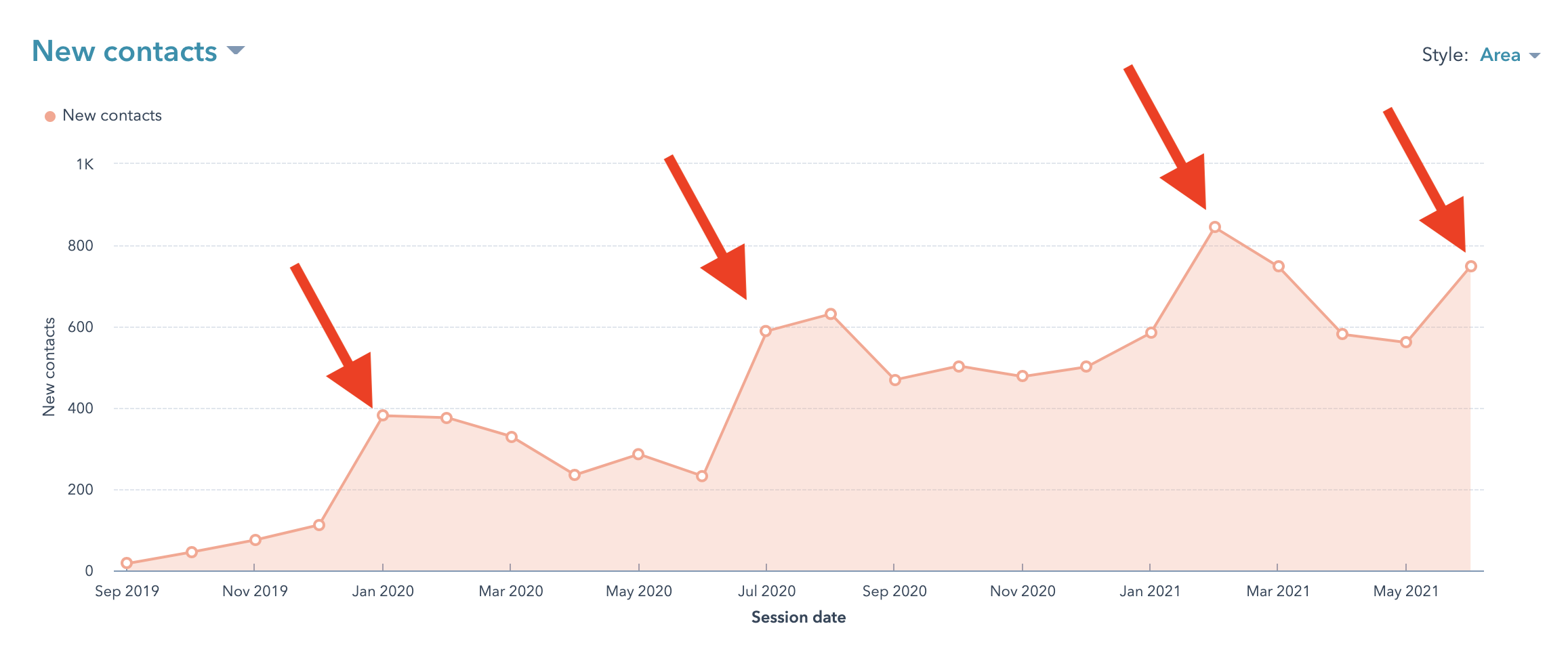
Lesson #4: Optimize for flexibility
Like a startup finding product/market fit, you are seeking publication/audience/company fit. You need to write stuff that appeals to the right person in the right way so they explore your product. You will get this wrong over and over again. Your only hope is to quickly adjust as you talk to your audience and publish new content.
Flexibility depends on strong feedback loops - As often as possible, you need to hear directly from your reader what they think of your content. Sometimes that can be via surveys or interviews. Other times, it requires being brutally honest about your metrics.
In the early days of running content, you’re a scientist. Pick a hypothesis, test it, and move on when you’re wrong. One example: our first version of a weekly newsletter had a “what we’re reading” section. Our logic was that this audience would want tech news curated specifically for their role.

Turns out, they didn’t. Our numbers showed that nobody clicked the links.

The next issue, I removed the links and nobody noticed, the surest sign nobody cared. A few weeks after we removed them the open rates jumped and hovered in the 40% range and the click rate jumped and hovered around 2.5%.

Another example of a strong feedback loop: when we interviewed partnership professionals we heard the same phrase verbatim: “I wish I had a playbook for partnerships.”
When many of your readers use the same exact phrasing, steal it. We released our Partner Playbook in early 2020 and it’s our most popular asset and has driven thousands of leads.

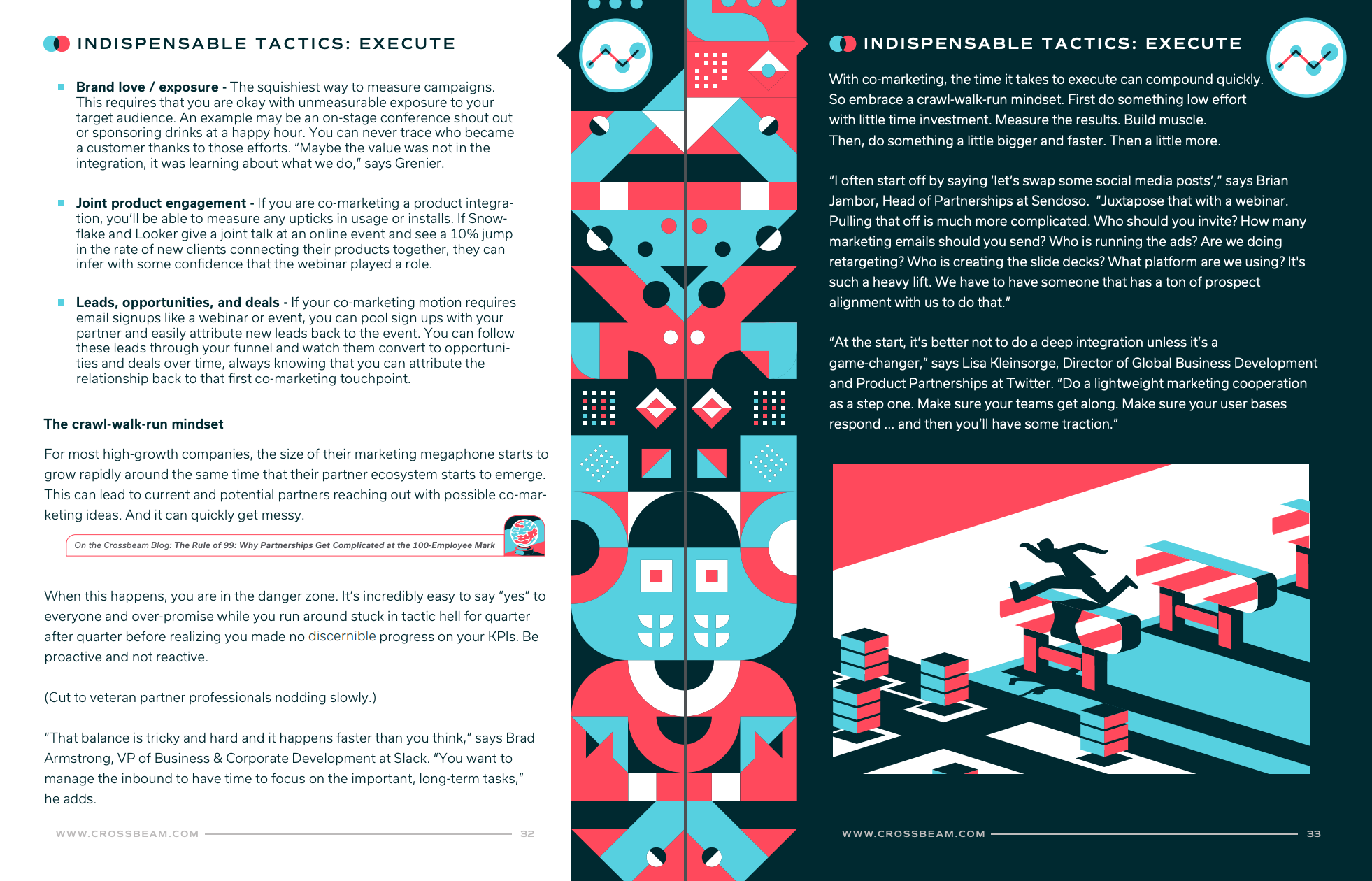
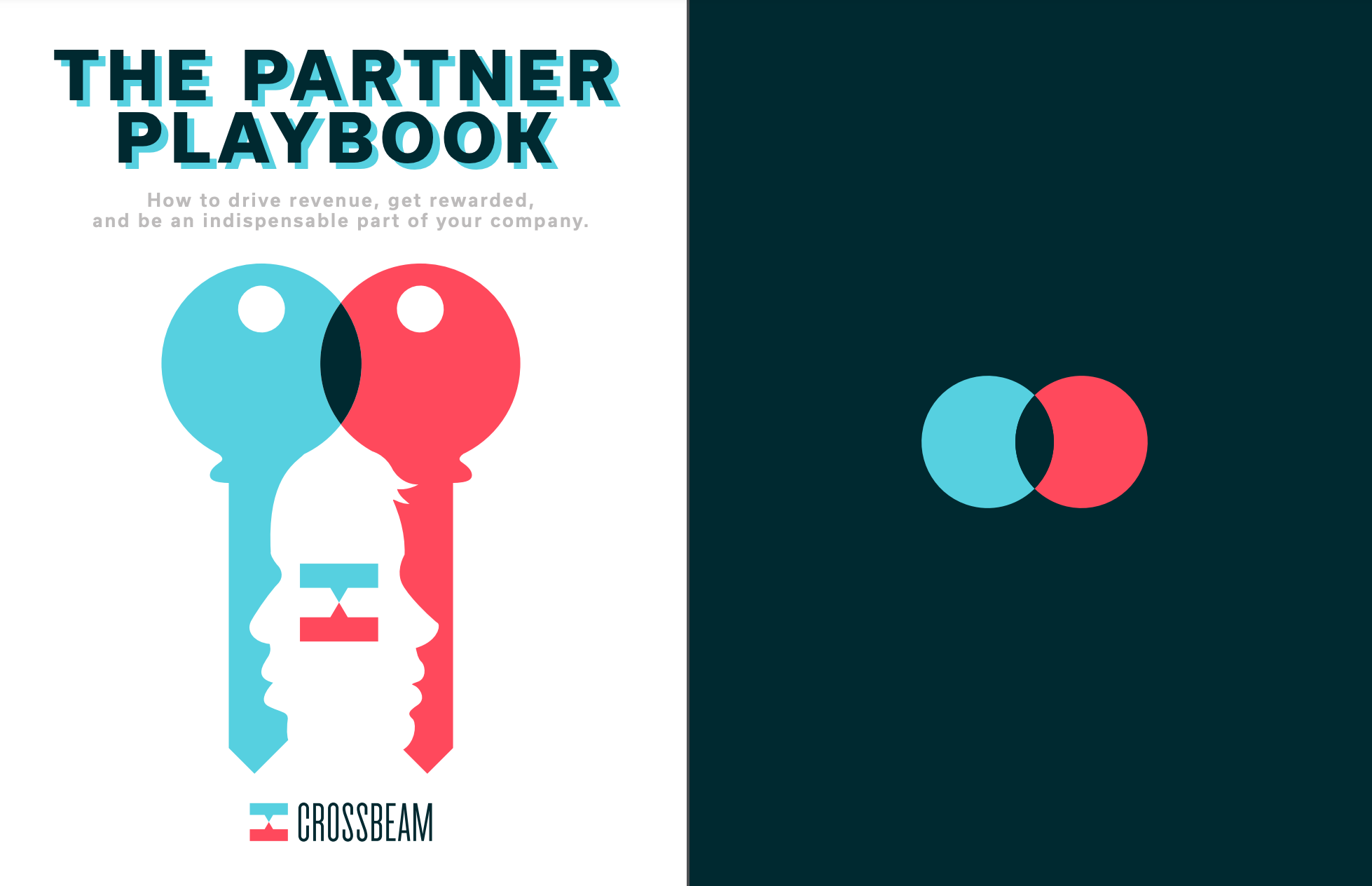
Lesson #5: Have an Opinion
This is common wisdom, so I won’t belabor the point. However, there is a reason this advice is so common: Your job description says you are making “content”, but you are really building a brand. And brands have opinions. Most startups make software and software can be pretty boring. But the reason the software is being created? Now that’s interesting.
Work to have a debatable view on how your company hopes the world will change. Ours is “Ecosystem is Everything.” Crossbeam believes that a company’s partner ecosystem and a willingness to connect with other businesses and services will be the prime lever for growth and a key indicator for success.
This is debatable, and some people reading our opinion may roll their eyes. Good. That’s the point. Everything we produce is a chapter in a never-ending book proving that “Ecosystem is Everything.
Once you carve out your company’s opinion, you’ll begin to play the long game. The longer software exists, the more likely it will be copied and commoditized. The separators will be brand and community. Make it clear what you stand for (brand) and it will attract like-minded people (community).
It's as if your Ecosystem is Everything 🤔🤔🤔🤔🤔 https://t.co/iJ3FcvvNq7
— Crossbeam (@Crossbeam) August 19, 2021
Lesson #6: Define the space
Crossbeam is a new kind of software. There is no “category” we fit snuggly into, and for many months we had no direct competitors. We’ve spent months convincing various publications and analysts that we are creating something brand new. And, like, I know, everyone says that, man. But we really are.
To help establish this new space, we introduced some new terminology to the marketplace:
- Crossbeam was a “ Partner Ecosystem Platform ” or PEP.
- Our service helped our customers drive Ecosystem Qualified Leads (EQLs).
- The tools and processes for running a partnerships org was Ecosystem Ops.
- A company with a vast partner network was a Supernode.
And so on…
At times, the concept of introducing yet another acronym or buzzword can become fraught. But when done correctly, you are naming something in need of identifying.
We soon saw competitors use these phrases, and readers began using them in emails to our team.


When defining the space, you set the rules of engagement. It’s like getting the high ground, not a guarantee your brand will win out, but it certainly helps.
If you’re in an already crowded space, think critically about what new positioning and functionality you are offering. Whatever sliver of an advantage your company is establishing over competitors should be named.
Some example business concepts that were totally made up by marketers include Customer Success, DevOps, and Growth Hacking.
Once you define these terms the content and community building options are endless. You can offer conferences, courses, certifications, article series, podcasts, books, and more.
Lesson #7: Use your size to your advantage
If you’re a small team (or just a single person) in charge of content you aren’t small, you are agile. One of the bigger mistakes I made in the early days was trying to go toe to toe with companies much much larger than us.
Example: I thought that if we could “map” different partner ecosystems and layer on analysis it would be like a honey pot to everyone in that space. Voila, our Ecosystem Guide was born. After a modestly successful blog test with e-commerce companies, our first PDF edition was Email Service Providers.
My team and I interviewed nearly 20 companies to learn what they were looking for in a partner. We layered on some data we collected and released it. We painstakingly “mapped” them according to partnerships, classified them into several categories, and offered an analysis of each one. It was a truly beautiful document thanks to Nick Beaulieu.



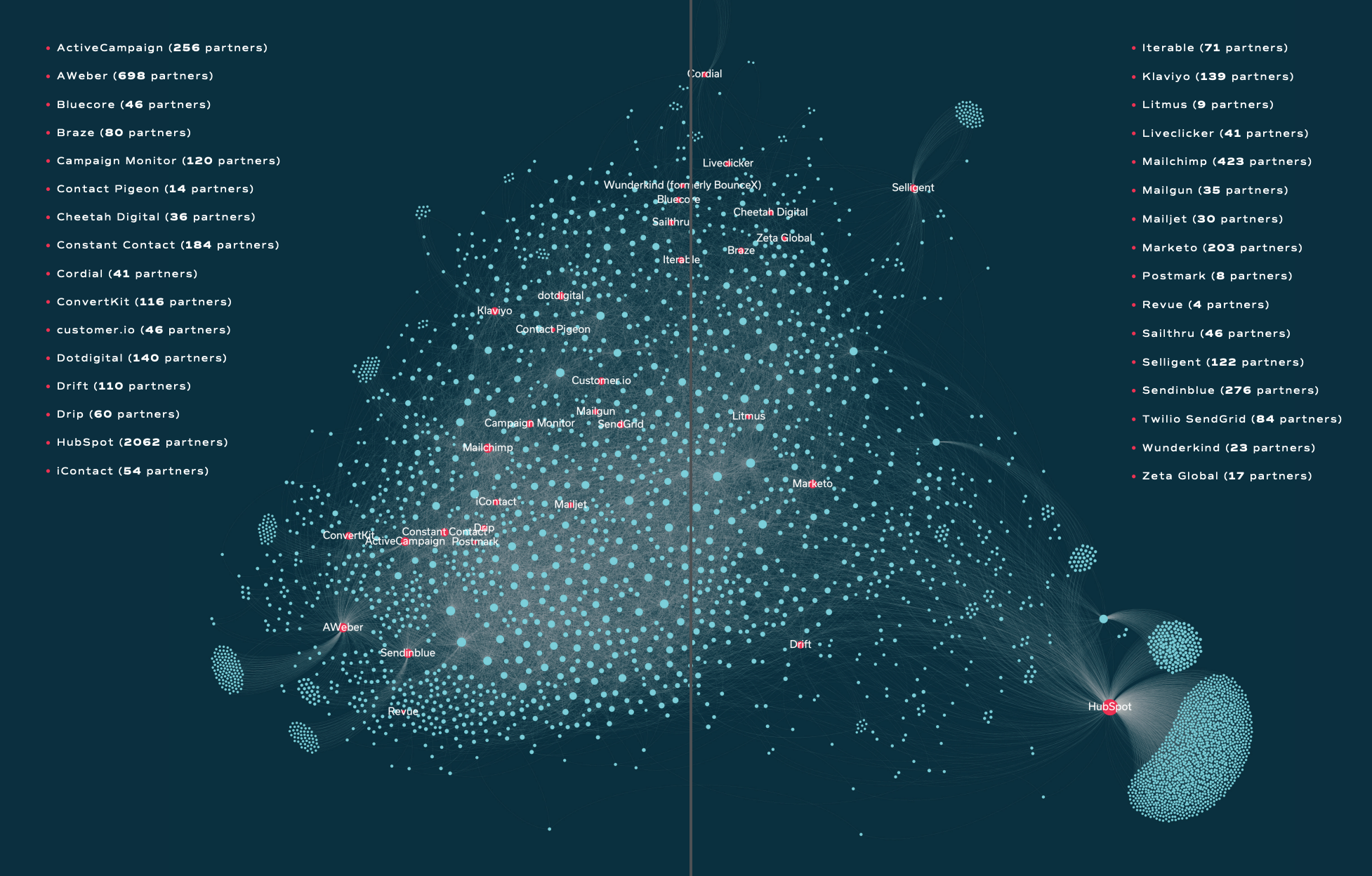
Unfortunately, it flopped.
Turns out if people really want to explore a vertical they will go to G2, or Capterra, or Forrester, or Tegus, or any one of the places where industry analysis is all they do. Crossbeam doing it on the side was never going to stack up, and the campaign was a big waste of resources. We may return to this series, and if we do, we’ll do something more cohesive and competitive than a one-off.
Instead, we focused efforts on the places we could provide unique value. For us, that was providing the fuel for partnership professionals to grow their career as individuals — not necessarily how they can grow their company’s partner ecosystem.
A nuanced, but important, distinction.
The result was the Partner Playbook and The State of the Partner Ecosystem, campaigns that have been much more successful than our poor Guidebook.

—
Other tips for the early days
- Focus is the most important thing. People smarter than you have tried this and failed because they tried doing too much at once. Pick one thing at a time. This is much easier said than done.
- A good early sign you’re onto something: Your sales team walks into meetings and people mention that they’ve heard of your tiny startup because of the content.
- Internal credibility is extremely important. Take goals and OKRs seriously, especially if you’re a team of one. If you want to continue to receive executive buy-in: be super clear about what you’re going to do, do it, and measure it.
- Ugly is ok. You’ll be compelled to “do it right the first time” and painstakingly design everything. Don’t. You have no idea what will work and what won’t. Get feedback before committing extra resources to branding.
_
Building a content and editorial team takes an appreciation of the long game — the willingness to get the “simple” things right and to revel in the process as much as the results. If this sounds like the kind of team you want to work with, drop me a line.